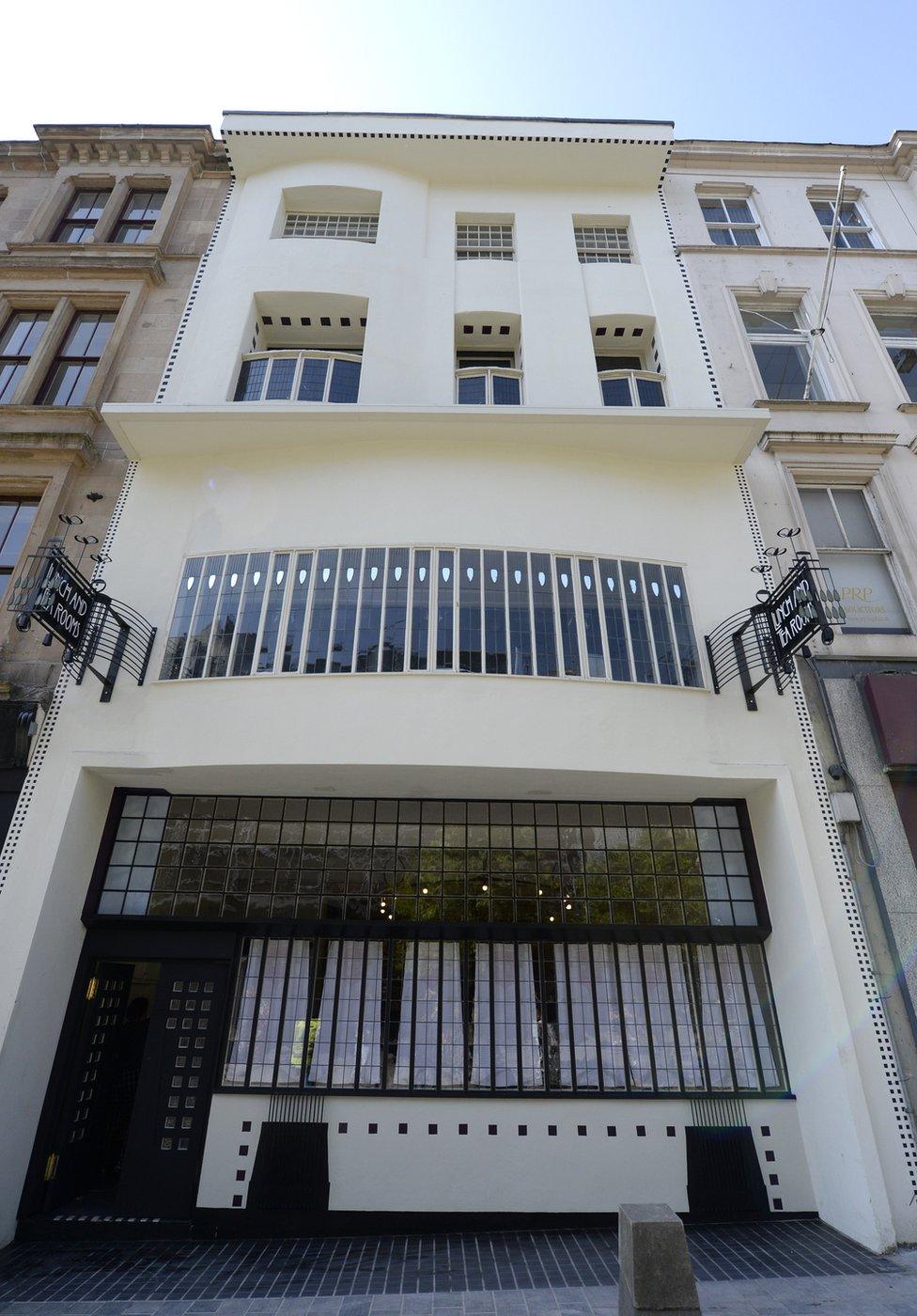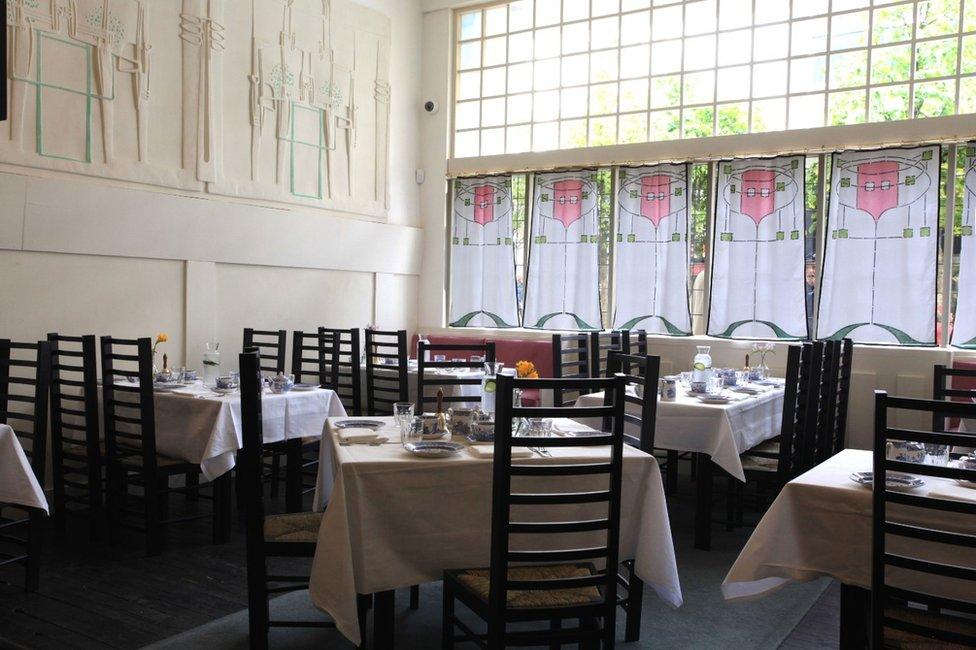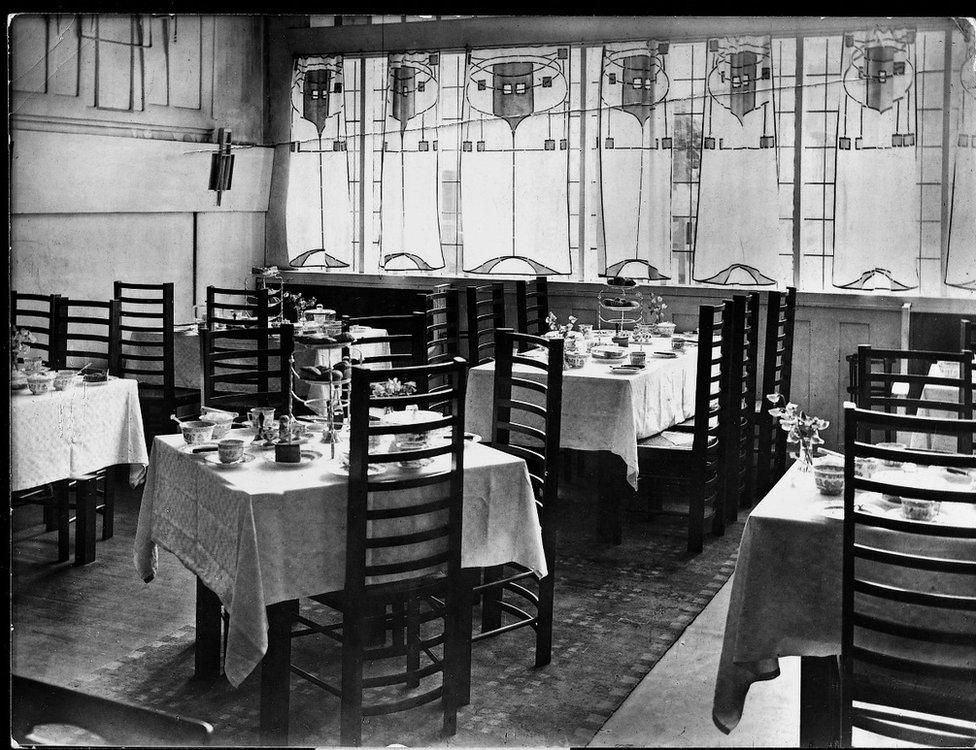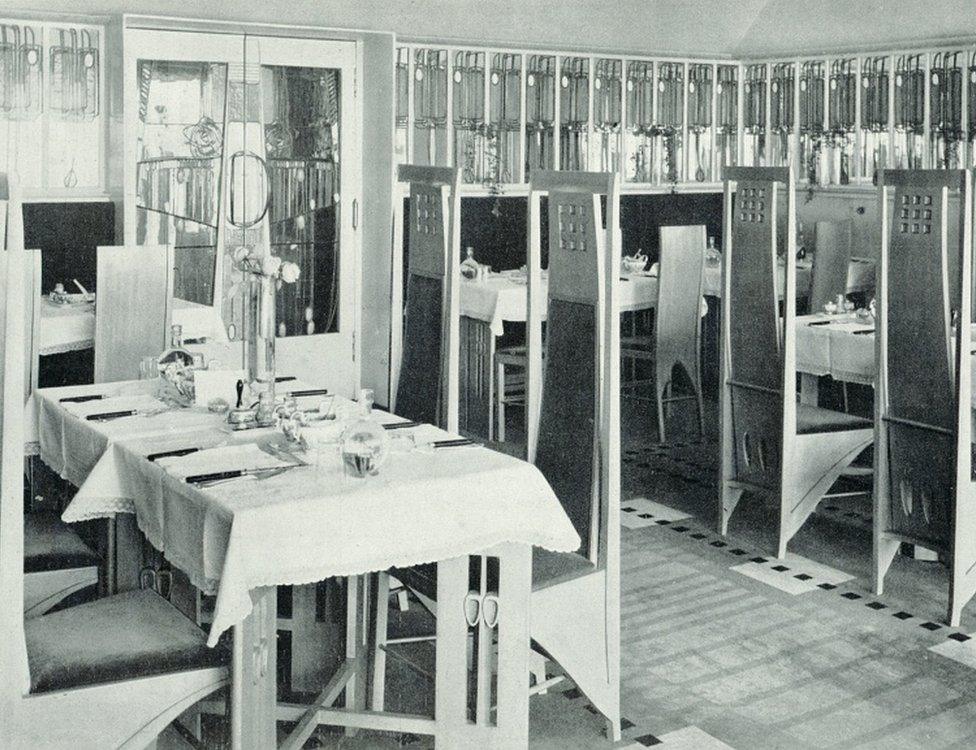Rennie Mackintosh tea rooms saved for the nation
- Published

The tea rooms have recreated every aspect of Mackintosh's 1903 original
A famous Glasgow tea rooms, originally designed by Charles Rennie Mackintosh, is to be taken over by the National Trust for Scotland.
The Mackintosh at the Willow on Sauchiehall Street was reopened five years ago after a £10m restoration.
Its future operations had been threatened by "difficult trading conditions".
But The Willow Tea Rooms Trust said it had now found a "safe haven" with the National Trust for Scotland.
The conservation charity will add the tea rooms to its portfolio of properties which include Mackintosh's Hill House in Helensburgh.
It said it was using £1.75m of its reserves and acquisition funds to address the immediate financial challenges and keep the business trading.
The NTS said the business model was "fundamentally sound and successful" and it was hopeful it would eventually get a return on its investment.
Last year the tea rooms attracted more than 230,000 visitors.
But the effects of the Covid pandemic and the fire which destroyed Mackintosh's Glasgow School of Art have affected its income in recent years.

The exterior was brought back to how it would have looked in 1903
The original 1903 Willow Tea Rooms were designed in their entirety by Mackintosh and he had total control inside and out.
It is the last remaining original of the several tea rooms designed by the celebrated architect, working with his wife Margaret Macdonald, for entrepreneur Miss Kate Cranston.
He remodelled the exterior of the 1860s tenement block and oversaw the interior decorative elements, right down to the design of the cutlery and the uniform of the waitresses.

The front salon in the recreated Willow tea rooms

The front salon of the original Willow Tea Rooms
In later years, as fashions changed, Mackintosh's Sauchiehall Street tea rooms underwent various transformations, including being hidden behind the bridal wear of a department store.
There were various attempts to revive the rooms and restore them to their former glory but by 2014 the building was up for sale and its future looked bleak.
But Glasgow businesswoman Celia Sinclair Thornqvist made it her mission to bring the tea rooms back to life.
She bought the building and set up a charitable trust to own and restore it before embarking on an effort to raise £10m, including £3.5m from heritage lottery funds.
The idea of the restoration was that every element had to be exactly as Mackintosh had intended.


Covid, the cost of living and two fires in the neighbourhood - including Mackintosh's School of Art - took their toll on what had once been a thriving business.
A new partner was needed and the National Trust for Scotland offered security, profile and a membership known for their passion for heritage.
And of course Celia Sinclair Thornqvist sealed the deal over a cup of tea in the elegant salon de luxe.
The NTS now face the same challenges as the Willow Tea Rooms Trust.
They too are still recovering from the pandemic, dealing with rising costs and decreased footfall.
But they also have a bigger budget, more support and experience in tourism and marketing.
They are confident the £1.7m they have invested in Mackintosh at the Willows will not just be returned but will contribute to the maintenance of the other 130 properties in their portfolio.
And exactly ten years after she first began work on the restoration of Mackintosh at the Willow, Celia is happy to let someone else take on the task of keeping the legend alive.
"I think they'll find it hard to get rid of me," she says
"I'll be having my tea and scone but I'm happy to leave the responsibility to someone else."


The Ladies' Room at Willow Tea Rooms 1905
Phil Long, the National Trust for Scotland's chief executive, said: "We've made the financial investment we have because we believe in the outstanding heritage significance of Mackintosh. He's known around the world.
"The business model for this place is fundamentally sound and successful but the external difficulties that it faced made the last years very challenging.
"We're in the fortunate position to deal with these financial challenges and set off on a new footing."
Ms Sinclair Thornqvist said the Willow Tea Room trustees had turned to the NTS as a "safe haven" to protect the integrity of the building, its decoration, the services provided and its dedicated staff.
Mackintosh at the Willow will formally become one of the National Trust for Scotland's properties with effect from 19 January.

Who was Charles Rennie Mackintosh?

Charles Rennie Mackintosh liked to have total artistic control of a project
Mackintosh is to Glasgow as Gaudi is to Barcelona and Frank Lloyd Wright to Chicago.
He is the designer who best sums up its style and its outlook.
Kate Cranston's Willow Tea Rooms was where Mackintosh showed his flair to the public.
He was born in Glasgow's Townhead in 1868, the fourth son of a policeman, and became an apprentice architect at 15.
He later worked for Glasgow firm Honeyman and Keppie while also studying at Glasgow School of Art.
Mackintosh was chosen to build the new art school in 1896 and, despite being unloved at the time, it was later considered his masterpiece until it was destroyed in a fire in 2018.
Other Mackintosh buildings include Scotland Street School, the Queen's Cross Church and Hill House in Helensburgh, which is also owned by the National Trust for Scotland.
He was largely unappreciated in Britain during his lifetime but in Europe he was admired as a leading figure in avant-garde art and design.
However, one wealthy patron returned to Mackintosh time and again - Miss Catherine Cranston, the empress of Glasgow's tea rooms.
In 1896, she asked him to design a set of murals for her Buchanan Street premises.
Two years later, for her Argyle Street tea rooms, Mackintosh produced a piece of furniture that would evolve into a design icon - his high-backed chair.
In 1903, Miss Cranston asked him to design her fourth Glasgow tea room, the famous Willow Tea Rooms, once the city's ultimate house of splendour.

Related topics
- Published7 June 2018

- Published6 August 2018

- Published4 June 2018

- Published16 June 2018
